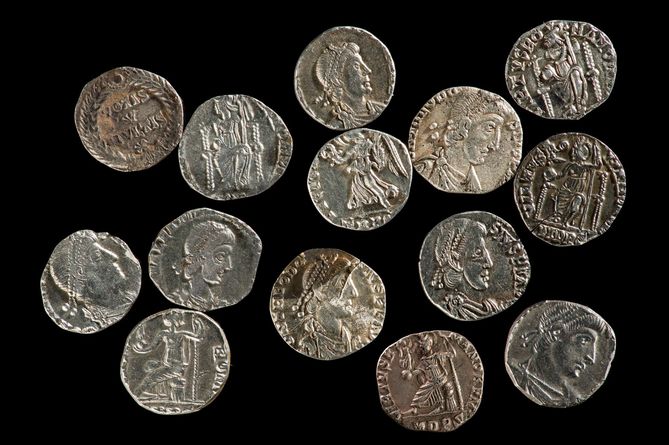“Significant” hoard of siliquae declared treasure
This hoard of 14 late-Roman silver coins was declared treasure last Thursday (7 July 2022). They were found by detectorist Colin Price in a ploughed field in Caerwent, the site of a Roman town. The 14 siliquae date from AD 360 – 402 and were all clipped. Toward the end of Roman rule in Britain bullion became scare and existing coins were probably clipped to produce new coinage.
Alastair Willis, Senior Curator of Numismatics and the Welsh Economy at National Museum Wales said: “The hoard is an unusual and significant new find for Wales, the first hoard of siliquae to have been discovered here and sheds new light on events in and around Caerwent at the end of Roman rule in Britain.”
The hoard is significant for two reasons:
First, most of the coins date to before AD 388 which is unusual for siliquae hoards in Britain. It may indicate that the supply of silver coins to South Wales was restricted for some reason.
Second, the hoard contains two siliquae of the Emperor Maximus, who is popularly linked to Macsen Wledig in the Mabinogion. He is seen as the founding father of early Welsh kingdoms.
The National Museum Wales hopes to acquire the coins for the Caerleon’s National Roman Legion Museum.

